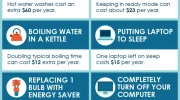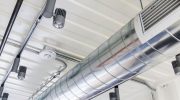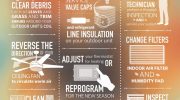
Cut Costs and Contribute to a Greener Planet with the Recently Announced Energy Home Improvement Tax Credit (25C)
Save big on your energy bills while helping to protect the planet with the new Energy Home Improvement Tax Credit (25C). This credit offers homeowners a great opportunity to make improvements to their homes that will not only enhance their comfort but also contribute to a greener future.
With the Energy Home Improvement Tax Credit (25C), you can receive tax incentives for making eligible energy-saving upgrades to your home. Take advantage of this new program to reduce your expenses and leave a positive impact on the environment.
Save money on your energy bills by investing in energy-efficient appliances, windows, insulation, and more. These upgrades will not only help you save on your monthly utility bills but also improve the overall value of your property.
Improve your home’s energy efficiency with the latest technologies and materials. Upgrade your heating and cooling systems, install smart thermostats, and seal any leaks or drafts to keep your home comfortable throughout the year.
Take advantage of the Energy Home Improvement Tax Credit (25C) to save money and contribute to a sustainable future for generations to come. Act now and start enjoying the benefits of an energy-efficient home!
Understanding the Energy Home Improvement Tax Credit (25C)
Are you looking to save money and help the planet at the same time? Look no further than the Energy Home Improvement Tax Credit (25C). This new credit allows homeowners to receive a tax credit when they make energy-efficient improvements to their homes. Not only will you be saving money on your energy bills, but you’ll also be reducing your carbon footprint.
What exactly does this credit cover? The Energy Home Improvement Tax Credit (25C) applies to a wide range of energy-saving improvements, including:
- Installing energy-efficient windows and doors
- Updating insulation in walls, attics, and crawl spaces
- Upgrading to energy-efficient heating and cooling systems
- Installing solar panels or other renewable energy systems
By making these improvements, you’ll not only be eligible for the tax credit, but you’ll also be enjoying the benefits of a more comfortable and energy-efficient home. Plus, you’ll be doing your part to combat climate change and protect our planet for future generations.
Here’s how the Energy Home Improvement Tax Credit (25C) works:
- Contact a qualified contractor to assess your home and recommend energy-saving improvements.
- Make the necessary improvements and keep all receipts and documentation.
- When you file your taxes, claim the tax credit on Form 5695.
- Enjoy the savings on your energy bills and the satisfaction of knowing you’re making a positive impact on the environment.
It’s important to note that the Energy Home Improvement Tax Credit (25C) is available for a limited time, so don’t wait to take advantage of this opportunity. Start saving money and helping the planet today!
Eligible Expenses for the Tax Credit
By making eligible energy-efficient home improvements, you can not only save money on your energy bills but also help save the planet. The new Energy Home Improvement Tax Credit (25C) allows you to receive a credit on your taxes when you make certain energy-saving upgrades to your home.
To be eligible for the tax credit, you need to make improvements that are considered energy-efficient. Some of the eligible expenses include:
- Installation of energy-efficient windows and doors
- Insulation upgrades
- High-efficiency heating, ventilation, and air conditioning (HVAC) systems
- Solar panels and other renewable energy systems
- Energy-efficient roofing materials
- Installation of programmable thermostats
These improvements not only help reduce your carbon footprint but also result in long-term savings on your energy bills. With the new Energy Home Improvement Tax Credit (25C), you can save money while making a positive impact on the environment.
Energy-Efficient Heating and Cooling Systems
Save Money and the Planet with Energy-Efficient Heating and Cooling Systems
Upgrade your home’s heating and cooling systems with our energy-efficient options and take advantage of the new home improvement tax credit. By investing in these innovative systems, you can save both money and the planet.
Why Choose Energy-Efficient Heating and Cooling Systems?
- Reduce energy consumption and lower your utility bills
- Minimize your carbon footprint and contribute to a greener future
- Enjoy a comfortable living space with improved temperature control
- Extend the lifespan of your HVAC equipment
New Home Improvement Tax Credit
With the new tax credit, you can receive a credit for a portion of the expenses incurred for the installation of energy-efficient heating and cooling systems. This means that you’ll not only save on your monthly energy bills but also get money back when filing your taxes.
Our Energy-Efficient Options
We offer a wide range of energy-efficient heating and cooling systems to meet your specific needs and requirements. From high-efficiency furnaces and air conditioners to geothermal heat pumps and smart thermostats, our products are designed to maximize energy savings without sacrificing comfort.
| Lower energy bills | High SEER rating and ENERGY STAR certification |
| Reduced environmental impact | Environmentally-friendly refrigerants |
| Enhanced comfort | Zoning capabilities and variable-speed technology |
| Longer equipment lifespan | Advanced filtration and smart maintenance notifications |
Contact Us Today
Take the first step towards a more energy-efficient home. Contact us today to learn more about our energy-efficient heating and cooling systems and how you can benefit from the new home improvement tax credit. Start saving money and the planet!
Insulation and Sealing
One of the most effective ways to save money and help the planet is by improving the insulation and sealing of your home. By reducing drafts and heat loss, you can significantly reduce your energy consumption and lower your utility bills.
With the new energy home improvement tax credit (25C), you can receive a credit for the cost of installing insulation and sealing materials in your home. This credit is available for both homeowners and renters, making it an accessible option for everyone.
Insulation and sealing materials include products such as:
- Weatherstripping: Sealing gaps around windows and doors to prevent air leakage
- Caulking: Sealing gaps and cracks in walls, ceilings, and floors
- Spray Foam Insulation: Filling gaps and cavities to improve the overall insulation of your home
- Insulation Board: Adding an extra layer of insulation to walls and roofs
By investing in these insulation and sealing materials, you can create a more comfortable and energy-efficient home. Your heating and cooling systems will work more efficiently, saving you money on your utility bills.
- Find a qualified contractor: Look for a contractor who specializes in insulation and sealing installations. They can help you determine the best materials for your home and ensure proper installation.
- Get a cost estimate: Request a cost estimate for the materials and installation. Keep in mind that you can claim a credit for the full cost of the materials, up to the maximum allowed by the tax credit.
- Claim your credit: Keep all relevant receipts and documentation, and file for the energy home improvement tax credit (25C) when you file your taxes. Be sure to consult with a tax professional to ensure you meet all eligibility requirements.
Improving the insulation and sealing of your home is not only a smart financial decision but also a way to contribute to a greener planet. By reducing your energy consumption, you can help decrease carbon emissions and combat climate change. Take advantage of the new energy home improvement tax credit (25C) and start saving money and the planet today.
Energy-Efficient Windows and Doors
Upgrade your home with energy-efficient windows and doors to save money on your energy bills and help the planet at the same time. The Energy-Efficient Windows and Doors credit (25C) allows you to receive a tax credit for making these improvements to your home.
By installing energy-efficient windows and doors, you can reduce your home’s energy consumption and lower your carbon footprint. These windows and doors are specially designed to optimize insulation and prevent drafts, helping to keep your home comfortable year-round.
Benefits of energy-efficient windows and doors:
- Lower energy bills: Energy-efficient windows and doors can significantly reduce heat loss or gain, resulting in lower heating and cooling costs.
- Improved comfort: With their advanced insulation properties, these windows and doors help maintain a consistent indoor temperature, keeping you comfortable in all seasons.
- Noise reduction: Energy-efficient windows and doors can also provide excellent sound insulation, reducing outside noise and creating a quieter living environment.
- Increased home value: Upgrading to energy-efficient windows and doors can enhance the overall value and curb appeal of your home.
- Environmental impact: By reducing energy consumption, you are helping to protect the planet by reducing greenhouse gas emissions.
To qualify for the Energy-Efficient Windows and Doors credit (25C), make sure to choose windows and doors that meet the ENERGY STAR® criteria for your climate zone. Check with your local energy efficiency programs for more information and eligible products.
Take advantage of this opportunity to save money and make a positive impact on the environment. Upgrade to energy-efficient windows and doors today!
Renewable Energy Sources
Discover the power of renewable energy sources and how they can revolutionize your home and lifestyle. By making new energy home improvements, you can save money on your energy bills, improve the comfort and efficiency of your home, and contribute to a healthier planet.
Switching to renewable energy sources not only benefits the environment, but it can also help you save on taxes. Take advantage of the energy home improvement tax credit (25C) and receive a credit on your taxes for qualified energy efficiency upgrades, such as solar panels, geothermal heat pumps, and wind turbines.
Here are some of the reasons why renewable energy sources are the future:
- Save Money: By generating your own electricity, you can significantly reduce your monthly energy bills.
- Improve Energy Efficiency: Renewable energy systems are designed to be highly efficient, minimizing wasted energy.
- Reduce Dependence on Fossil Fuels: Renewable energy sources like solar and wind power are abundant and do not deplete natural resources.
- Lower Carbon Footprint: Renewable energy produces little to no greenhouse gas emissions, helping to combat climate change.
- Create a Sustainable Future: By embracing renewable energy, you are contributing to a more sustainable and resilient future for generations to come.
Ready to make the switch to renewable energy sources? Contact us today to learn more about how you can benefit from the energy home improvement tax credit and start saving money while protecting the planet.
Water Conservation Systems
Save money and the planet with our new water conservation systems for your home improvement projects.
Did you know that water is one of our planet’s most valuable resources? By conserving water, you can do your part to protect the environment and save money on your utility bills.
Our water conservation systems are designed to help you reduce your water usage and make your home more energy-efficient. With the rising cost of water, investing in our systems can lead to significant savings over time.
Here are some key features of our water conservation systems:
- Smart water meters that monitor your water usage in real-time
- High-efficiency toilets and faucets that use less water
- Rainwater harvesting systems that collect and store rainwater for future use
- Drip irrigation systems that deliver water directly to your plants’ roots, minimizing waste
Not only will our water conservation systems help you save money and reduce your environmental impact, but they may also qualify for the new energy home improvement tax credit (25C). Take advantage of this opportunity to receive a tax credit while making a positive impact on the planet.
Invest in our water conservation systems today and join the movement to create a more sustainable future for all.
Certification and Documentation
To claim the energy home improvement tax credit (25C) and save money on your taxes while supporting the planet, you will need to provide the necessary certification and documentation. This will ensure that you meet the requirements and qualify for the credit.
- Receipts and Invoices: Keep all receipts and invoices for the energy-efficient products or services you purchased for your home improvement project. These documents will serve as proof of purchase and cost.
- Manufacturer Certification Statements: Some energy-efficient products require a manufacturer certification statement to qualify for the tax credit. These statements confirm that the product meets the energy efficiency standards specified by the IRS.
- Installer Certification: In some cases, you may need certification from a qualified installer stating that the product was installed properly. This certification is necessary for certain energy-efficient heating, cooling, and water heating systems.
It is essential to keep these documents organized and easily accessible for your tax filing. The IRS may request these documents as proof of eligibility during an audit.
Note: Always consult a tax professional or refer to the IRS guidelines to understand the specific documentation requirements for claiming the energy home improvement tax credit (25C).
By ensuring you have the proper certification and documentation, you can confidently claim the tax credit and enjoy the benefits of saving money while making environmentally-friendly choices for your home.
Benefits of the Energy Home Improvement Tax Credit (25C)
By taking advantage of the Energy Home Improvement Tax Credit (25C), you can experience numerous benefits for both your wallet and the environment. Here are some of the key benefits:
- Saving money: The tax credit allows you to receive a credit on your federal income taxes for making energy-efficient improvements to your home. This can help you save money on your tax bill.
- Reducing energy consumption: The credit encourages homeowners to invest in energy-efficient upgrades, such as improving insulation, upgrading windows, or installing energy-saving appliances. These improvements can significantly reduce your energy consumption, leading to lower energy bills over time.
- Protecting the planet: By reducing your energy consumption, you are also reducing your carbon footprint. Energy-efficient improvements help conserve natural resources and reduce greenhouse gas emissions, making a positive impact on the environment.
- Increasing home value: Energy-efficient upgrades not only provide immediate cost savings but can also increase the value of your home. Buyers are increasingly interested in eco-friendly homes, and having energy-efficient features can make your property more desirable in the real estate market.
- Supporting local businesses: Investing in energy-efficient upgrades often involves hiring local contractors and purchasing eco-friendly products. By participating in the tax credit program, you are supporting local businesses and helping to stimulate the economy.
Overall, the Energy Home Improvement Tax Credit (25C) offers a win-win situation. You can save money on your taxes, reduce your energy bills, protect the planet, increase your home value, and support local businesses all at the same time. Take advantage of this opportunity to make your home more energy-efficient and contribute to a greener future.
Financial Savings
Save both money and energy with our home improvement solutions. By taking advantage of the New Energy Home Improvement Tax Credit (25C), you can make significant financial savings while also helping the planet.
Here’s how you can save:
- Reduced energy bills: Our energy-efficient solutions help you lower your energy consumption, resulting in lower monthly utility bills.
- Tax credits: The New Energy Home Improvement Tax Credit (25C) allows you to claim a credit on your taxes for qualified energy-efficient home improvements.
- Long-term savings: Investing in energy-efficient upgrades for your home can result in long-term savings, as you’ll continue to save on energy costs year after year.
- Increase in home value: Energy-efficient improvements can increase the value of your home, making it a wise financial investment.
Don’t miss out on the opportunity to save money while making a positive impact on the planet. Contact us today to learn more about our energy-efficient home improvement solutions and how they can help you save both energy and money.
Environmental Impact
By taking advantage of the new energy home improvement tax credit (25C), you not only save money, but also contribute to a healthier planet. Here’s how:
- Energy Savings: Investing in energy-efficient upgrades for your home can significantly reduce your energy consumption. This means lower utility bills and more money in your pocket.
- Reduced Carbon Footprint: Energy-efficient homes consume less fossil fuels, which helps reduce greenhouse gas emissions. By making energy-saving improvements, you are actively participating in the fight against climate change.
- Conservation of Natural Resources: Energy-efficient home improvements often involve the use of sustainable materials and technologies. These practices help conserve valuable natural resources, such as water and timber.
- Improved Air Quality: Energy-efficient upgrades can help improve indoor air quality by reducing the presence of pollutants and allergens. This creates a healthier living environment for you and your family.
- Encouraging Renewable Energy: The new energy home improvement tax credit (25C) provides incentives for the adoption of renewable energy technologies, such as solar panels and geothermal systems. By investing in these technologies, you support the growth of clean and sustainable energy sources.
By participating in the energy home improvement tax credit (25C) program, you not only save money in the long run, but also contribute to a greener future for our planet.
Increased Home Value
With the new energy home improvement tax credit (25C), you can not only save money on your energy bills but also increase the value of your home. By making energy-efficient improvements, your home becomes more attractive to potential buyers and appraisers.
Investing in home improvements such as installing energy-efficient windows, upgrading insulation, or replacing old appliances with energy-saving ones will not only save you money in the long run but also increase your home’s value. It’s a win-win situation!
Homebuyers are becoming more discerning, looking for homes that are not only aesthetically pleasing but also energy-efficient. By taking advantage of the new energy home improvement tax credit, you can make your home stand out in the competitive real estate market.
When it comes time to sell your home, having energy-efficient features and improvements can give you a higher asking price and attract more potential buyers.
- Energy-efficient improvements increase the desirability of your home
- Potential buyers are willing to pay more for energy-saving features
- Appraisers take into account energy-efficiency when valuing your home
- Investing in energy-efficient improvements is a smart financial decision
Don’t miss out on the opportunity to increase your home’s value while saving money on your energy bills. Take advantage of the new energy home improvement tax credit today!
How to Claim the Tax Credit
To save both money and the planet, take advantage of the energy home improvement tax credit (25C). Follow these simple steps to claim the credit:
- Check eligibility: Make sure your home improvement qualifies for the tax credit. Eligible improvements include installing energy-efficient windows and doors, adding insulation, or upgrading HVAC systems.
- Keep receipts and documentation: Save all receipts, invoices, and product labels related to your home improvement. These documents will be necessary when filing your taxes.
- Calculate the eligible expenses: Use the Total Amount Paid column on your receipts and invoices to determine the total amount you spent on qualifying improvements. Keep in mind that some improvements have individual expense limits.
- Complete IRS Form 5695: Fill out IRS Form 5695, Residential Energy Credits, to claim the energy home improvement tax credit. This form should be included with your annual tax return.
- Enter the credit amount on your tax return: Transfer the credit amount from Form 5695 to the appropriate line on your tax return. This credit will directly reduce the amount of tax you owe.
- Submit your tax return: File your tax return with Form 5695 attached. Make sure to follow the instructions provided by the IRS for submission.
By following these steps, you can save money on your taxes while making energy-efficient improvements to your home. Take advantage of the energy home improvement tax credit and contribute to a greener future for our planet!
Gathering Receipts and Documentation
When it comes to taking advantage of the new Energy Home Improvement Tax Credit (25C), it’s important to gather all the necessary receipts and documentation to ensure that you can save money while also helping the planet.
Here are some key documents and receipts you should gather:
- Receipts for Energy-Efficient Products: To qualify for the tax credit, you’ll need to provide receipts for the energy-efficient products you’ve purchased. This can include items such as energy-efficient windows, doors, insulation, and more. Make sure to keep these receipts in a safe place.
- Manufacturer’s Certification Statement: In addition to your receipts, you’ll need the manufacturer’s certification statement for each energy-efficient product. This statement confirms that the product meets the necessary energy-saving requirements.
- Proof of Payment: It’s also important to keep proof of payment for each energy-efficient product. This can include credit card receipts, canceled checks, or other forms of payment. Make sure the proof of payment clearly shows the amount paid and the date of payment.
- Documentation for Qualified Energy Property: If you’ve installed any qualified energy property, such as solar panels or geothermal heat pumps, you’ll need to gather documentation to demonstrate that these installations meet the necessary requirements.
- Home Energy Audit Reports: If you’ve had a professional home energy audit conducted, be sure to include the audit report in your documentation. This report will help validate the energy-saving improvements you’ve made and may be required for certain tax credits.
By gathering all the necessary receipts and documentation, you can have peace of mind knowing that you’re taking full advantage of the energy home improvement tax credit. Not only will this help you save money on your taxes, but it will also contribute to a healthier planet.
Filing Taxes with the Tax Credit
If you are a homeowner looking to save money and contribute to a sustainable planet, then taking advantage of the new Energy Home Improvement Tax Credit (25C) is an excellent option for you. This tax credit allows you to reduce your tax liability while investing in energy-efficient upgrades for your home. As you work towards making your home more energy-efficient, you can also save money on your energy bills in the long run.
Filing your taxes with the Energy Home Improvement Tax Credit is a simple and straightforward process. Here are the steps you need to follow:
- Gather your receipts and documentation for the energy-efficient upgrades you made to your home. This can include items such as ENERGY STAR certified windows, doors, insulation, and HVAC systems.
- Complete the necessary tax forms, including Form 5695, which is used to claim residential energy credits.
- Enter the total amount of your eligible expenses on Form 5695. Be sure to keep all your receipts and documentation as proof of your energy-efficient upgrades in case of an audit.
- Calculate the amount of your tax credit using the instructions provided on Form 5695.
- Include the total amount of your tax credit on your tax return.
It’s important to note that the Energy Home Improvement Tax Credit has certain limitations and restrictions. For example, there is a maximum credit amount of $500 for eligible expenses. Additionally, not all energy-efficient upgrades qualify for the tax credit, so it’s essential to review the eligible improvements before making any purchases for your home.
By taking advantage of the Energy Home Improvement Tax Credit, you can save money on your taxes while making environmentally-friendly choices for your home. It’s a win-win situation for both your wallet and the planet.
Question-answer:
What is the New Energy Home Improvement Tax Credit (25C)?
The New Energy Home Improvement Tax Credit (25C) is a federal tax credit that provides a financial incentive for homeowners to make energy-efficient upgrades to their homes. It offers up to $500 in tax credits for eligible improvements, such as installing solar panels, energy-efficient windows, or insulation.
What types of home improvements qualify for the tax credit?
There are a variety of home improvements that qualify for the New Energy Home Improvement Tax Credit (25C), including installing energy-efficient windows and doors, adding insulation, upgrading heating, ventilation, and air conditioning systems, and installing solar panels and wind turbines.
How much money can I save with the tax credit?
The amount of money you can save with the New Energy Home Improvement Tax Credit (25C) depends on the cost of the improvements you make to your home. The tax credit offers a 10% credit for eligible improvements, up to a maximum credit of $500.
How do I claim the tax credit?
To claim the New Energy Home Improvement Tax Credit (25C), you will need to file IRS Form 5695 along with your federal tax return. You will also need to have documentation of the improvements you made to your home, such as receipts and product labels.
Is there an income limit to qualify for the tax credit?
No, there is no income limit to qualify for the New Energy Home Improvement Tax Credit (25C). However, keep in mind that the tax credit is non-refundable, meaning it can only offset your tax liability. If you don’t owe any taxes, you won’t be able to benefit from the credit.
What is the New Energy Home Improvement Tax Credit (25C)?
The New Energy Home Improvement Tax Credit (25C) is a tax credit offered by the government to incentivize homeowners to make energy-efficient improvements to their homes. The tax credit can be claimed for qualifying improvements made during a specified tax year.








